Recent Water Damage Posts
Addressing Water Damage in Multi-Story Buildings: Condos and Apartments
10/18/2023 (Permalink)
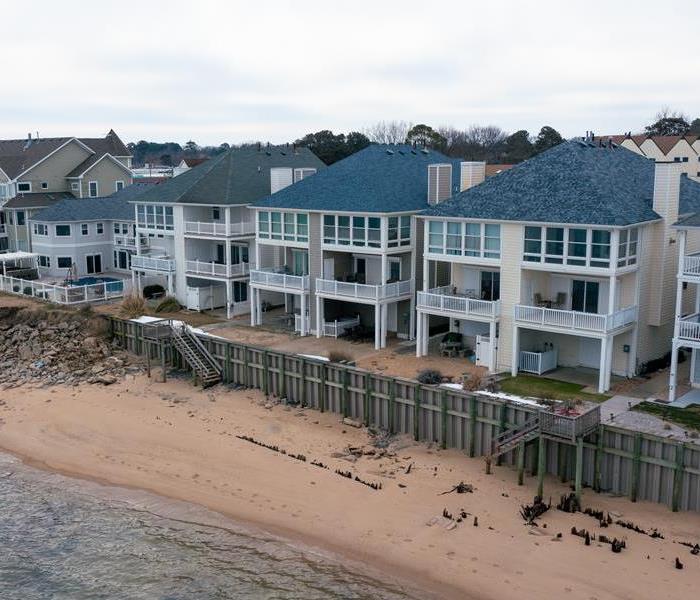 Addressing water damage from multi-story buildings quickly to prevent secondary damage.
Addressing water damage from multi-story buildings quickly to prevent secondary damage.
Water damage can be a significant concern in multi-story buildings such as condos and apartments. When water leaks or floods occur, they can quickly impact multiple units and cause extensive damage. In this blog post, we will discuss essential steps to address and mitigate water damage in multi-story buildings, ensuring a prompt and effective response.
Immediate Reporting and Communication
In a multi-story building, it is crucial to have clear communication channels in place. Tenants should be educated on the importance of immediately reporting any water leaks or damages to the property management or building maintenance team. Prompt reporting enables swift action and prevents further damage.
Shut Off the Source
If possible, identify and shut off the source of the water leak. This could involve turning off the main water supply valve or individual valves for affected units. Acting quickly to stop the flow of water can minimize damage and prevent it from spreading to other units.
Notify Neighboring Unit
In multi-story buildings, it is essential to promptly inform neighboring units about any water damage incident. This allows residents to take necessary precautions and protects them from potential hazards or further damage. Establish a communication protocol to ensure swift notification in case of emergencies.
Request Professional Help
Engage the services of water damage restoration professionals who specialize in handling multi-story buildings. These experts have the necessary equipment, expertise, and resources to effectively mitigate water damage and restore the affected areas. They can assess the extent of the damage, perform necessary repairs, and prevent mold growth.
Document Damage and Insurance Claims
Take photographs or videos of the water damage, as these will be valuable for insurance claims and documentation. Notify your insurance provider immediately to initiate the claims process and ensure that you provide accurate and thorough documentation of the damage.
Coordinate Repairs and Restoration
In multi-story buildings, repairs and restoration activities need to be coordinated to minimize disruption to residents. Property management should work closely with restoration professionals and residents to establish a comprehensive plan that addresses repairs, timelines, and any necessary relocations.
Prioritize Preventative Measures
To prevent future water damage incidents, implement preventative measures such as regular plumbing inspections, maintenance of drainage systems, and addressing any known vulnerabilities in the building's infrastructure. Educate residents about proper maintenance practices and the importance of promptly reporting any issues.
Transparent communication is crucial during the water damage restoration process. Keep residents informed about the progress of repairs, expected timelines, and any necessary temporary accommodations. Regular updates help manage expectations and minimize uncertainty.
Addressing water damage in multi-story buildings requires a coordinated effort between residents, property management, and water damage restoration professionals. By establishing clear communication channels, taking immediate action, and prioritizing preventative measures, the impact of water damage can be minimized, and the building can be restored to a safe and habitable condition.
Everything You Need to Know About Machine Leaks
7/14/2023 (Permalink)
Machine leaks can be a common and frustrating issue in households and commercial settings. Whether it's a washing machine, refrigerator, or other appliances, a leak can cause significant water damage if not addressed promptly. In this blog, we will provide you with a comprehensive guide on machine leaks. We'll explore the common causes behind machine leaks, discuss preventive measures to avoid such incidents, and guide you through the restoration process if you encounter a machine leak in your home or business.
Causes of Machine Leaks
Machine leaks can occur due to various reasons, including aging or worn-out seals or gaskets, damaged or loose hoses, malfunctioning valves, and clogged or blocked drain lines. In washing machines, overloading, using excessive detergent, or an unbalanced load can also lead to leaks. Similarly, in refrigerators, a faulty defrost drain or damaged water supply line can cause leaks.
Preventing Machine Leaks
Taking preventive measures can help you avoid the hassle and potential water damage caused by machine leaks. Regularly inspect and maintain your appliances, ensuring that seals, gaskets, and hoses are in good condition. Clean or replace filters and remove any debris or blockages from drain lines. Follow manufacturer guidelines for proper usage, load size, and detergent quantities. For refrigerators, inspect and replace damaged or kinked water supply lines, and periodically clean the defrost drain to prevent clogs.
Restoration Process for Machine Leaks
If you discover a machine leak, it's crucial to address it promptly to prevent further damage. Start by shutting off the machine and disconnecting power or water supply if necessary. If there is standing water, remove it and dry the affected area thoroughly. Identify the source of the leak and repair or replace the damaged component. In cases of extensive water damage, it's recommended to seek professional assistance to ensure proper cleanup, drying, and restoration of any affected materials or structures.
Being aware of the causes of machine leaks and implementing preventive measures can save you from potential water damage and costly repairs. Regular maintenance, timely repairs, and responsible usage practices are essential for avoiding machine leaks. However, if you do encounter a machine leak, swift action and seeking professional help for restoration can help minimize the damage and ensure your property is restored to its pre-leak condition.
Remember, if the extent of the damage is beyond your capabilities, it's advisable to contact a reputable disaster restoration professional, such as our SERVPRO of Kingwood/Humble team. These experts have the knowledge, experience, and specialized equipment to handle machine leaks effectively and efficiently, safeguarding your property and restoring it to its original state.
Why Are My Floors Buckling? 3 Common Causes
3/15/2023 (Permalink)
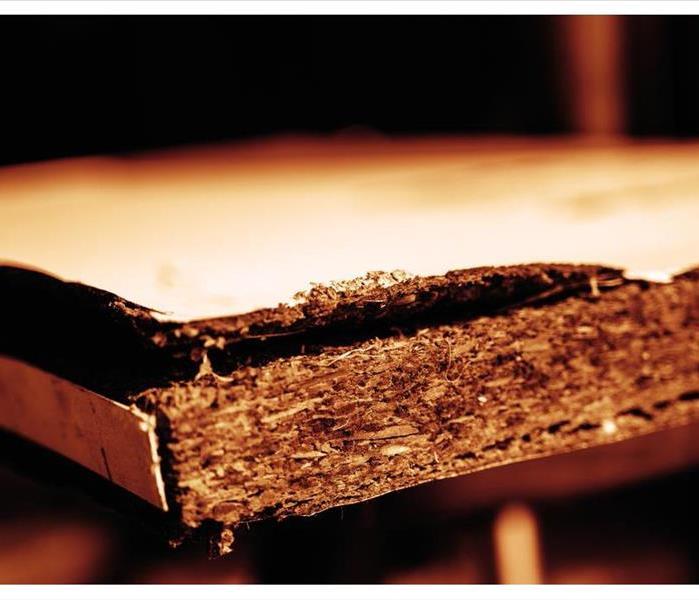 When your flooring suffers water damage, we are here to help.
When your flooring suffers water damage, we are here to help.
Floors are an important part of any home and can be a great investment if you choose the right one. However, when your floors start to buckle or crack, it's an indication that something is wrong. In this article, we'll discuss what causes these issues to happen so that you can learn how to avoid them in the future.
Water Damage
Water can cause buckling in wood floors. When water gets into the wood, the wood naturally expands to accommodate the moisture. This can cause damage to the flooring material.
When it comes to wood flooring, this expansion can happen quickly if there's been an excessive amount of water introduced to your flooring. If your home or business suffers from a water damage event such as a leak or flooding, your floors are at risk!
High Humidity
High humidity can cause your floors to buckle and warp. High humidity is the result of excess moisture in the air, which is caused by water vapor or other liquids that have been introduced into your home's air circulation system. Not only can high humidity cause damage to your flooring, but it can also lead to other issues on your property, such as mold damage. In any case, it is important to keep the humidity levels in check.
To reduce the risk of buckling and warping, you'll want to make sure that you're keeping your home's relative humidity at a reasonable level: between 30% and 50%.
Drastic Temperature Changes
If your floors are buckling, the problem may be due to drastic temperature changes. This is especially common when it comes to wood floors, which can expand and contract depending on their exposure to heat or cold. This change might not occur drastically but can become an issue after just a few seasons.
It's Important to Get Professional Help Right Away
If your floors are buckling, it may be due to any of these problems, so it's important to get professional help right away. Floors can buckle for many reasons, but the most common cause is moisture. When you have excessive water sitting on a surface for too long, the wood begins to expand. This causes them to warp and crack over time as well as causing other problems like mold growth inside your home or business building.
A water leak or high humidity can cause buckling floors. If you see signs of water damage in or around your home or business, call SERVPRO of Kingwood/Humble for all your water damage cleanup and restoration needs.
Furniture Water Damage
2/10/2023 (Permalink)
 After a water loss in your home, we are here to help restore you property properly back to pre loss conditions.
After a water loss in your home, we are here to help restore you property properly back to pre loss conditions.
Water damage is never good for your furniture. If water damage goes left untreated, it can affect the structural integrity of your pieces over time and cost a lot of money to fix. When water damage is treated in a timely manner, there's a chance that your furniture will be salvageable. Here's what to do if your furniture gets damaged from water.
Remove Drawers and Cushions
Water can effect your entire piece of furniture quickly. It is important to remove and drawers or cushions to the furniture to help with the drying process. Opening the piece of furniture up with allow for adequate drying. Wood will take longer to dry than plastic or metal.
Cleaning
The first step in the cleaning process is to assess the level of damage and determine whether it can be repaired. Never attempt to clean a damaged piece of furniture or clothing on your own unless you know if it within your line of knowledge. If there is extensive water damage or stains on the fabric, you may have no other choice but to throw it out.
Don't use harsh chemicals or cleaners. Water damage can cause a number of different types of stains including mold and mildew growths. Using harsh chemicals or cleaners could make these problems worse by stripping the natural oils from materials like cotton or leather. Instead, try applying warm water with a soft cloth over any affected areas before moving on to another method.
The wood could have extensive water damage, you may use a wet/dry vacuum to remove water before wiping it down with a rags. Removing as much water as possible can cut back on secondary damages.
Treat Water Stains
If your furniture suffers from water stains, treat it with paint thinner, denatured alcohol or mineral spirits. These solvents are found in hardware stores and should be applied to a soft cloth with care. A small amount of solvent should be rubbed onto the stain until it disappears, don't apply too much because you can damage the wood underneath. Then let the solvent sit for a few minutes before wiping it off with a clean cloth.
If your furniture needs to be re-oiled after cleaning, it is recommended that you first use an oil-based stain on the damaged area. This will help seal in moisture and prevent further damage from occurring. You can find stains designed for wood at most hardware stores or online retailers such as Amazon or Home Depot. Select one that’s appropriate for your type of finish, whether it’s polyurethane, lacquer or shellac.
Furniture damage is a common problem after a water loss. Give the professionals at SERVPRO of Kingwood/Humble a call at the first sign of water damage in your property to help restore your furniture back to pre loss conditions.
What Are Reasons To Have Noisy Pipes?
11/4/2022 (Permalink)
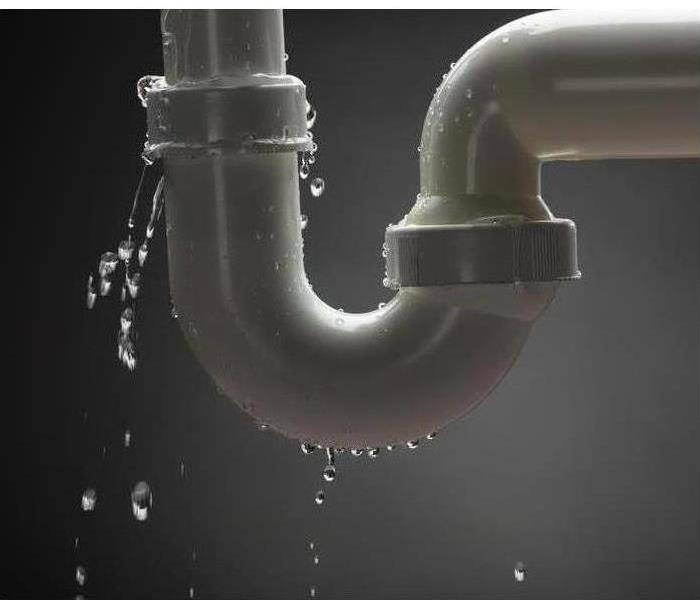 It's crucial to get a professional to come in and look at any noisy pipes you may have.
It's crucial to get a professional to come in and look at any noisy pipes you may have.
What Causes Noisy Pipes?
If you hear strange noises coming from your pipes, you're probably wondering what's going on. The good news is that most of the time, there's nothing to worry about — sometimes it can be as simple as a small amount of water that has entered the pipe or something falling into the waste line. However, if your pipes are making loud banging noises or rattling around in their fittings, then there may be more serious issues at hand, and you should consider calling an expert immediately.
How do noisy pipes happen?
There are many reasons why a pipe might develop a noise. The most common cause is water hammer, which occurs when you turn off your faucet and the air in the pipes tries to rush out of them. This can be caused by multiple factors such as high-water pressure or a broken or leaking pipe.
Another possible reason for noisy pipes is that you may have an object stuck in one of your drains and that's causing it to vibrate.
What should you do about noisy pipes?
If you hear a significant amount of noise coming from your pipes, it's best to call a professional. If it's a small leak that you can fix yourself, however, here are some tips:
- Drill holes in the wall behind the noisy pipes and push ear plugs into them. This will help reduce the sound being heard on the other side of the wall by dampening its transmission.
- Look for hidden sources of noise (such as an air compressor) that could be interfering with your plumbing system.
Call a specialist to inspect any noisy pipes you may have in your home.
If you have noisy pipes in your home, it may be time to call a professional to come in and investigate. Here are some of the common causes of pipe noise:
Corrosion – The most common reason for pipe noise is corrosion. This occurs when water runs through the pipes, causing them to corrode over time. If your home has older pipes, they could be more susceptible to corrosion than newer ones would be. In this case, one solution might be simply replacing those old pipes with newer ones that don't corrode as quickly or easily (though this can be expensive).
Age – As any homeowner knows, older homes tend to have older plumbing systems—and these often aren't nearly as reliable as modern ones are! If yours is one such older model and you're experiencing frequent problems with things like clogged drains or running toilets, then consider having them replaced before they start causing more serious issues like broken water lines or burst pipes (which can cause major flooding throughout your house).
Defective construction - While most people think about flaws occurring during manufacturing processes at factories where products are made by machine operators who make mistakes in adding certain materials into their products' ingredients lists which may not belong there because they didn't know what they were doing correctly enough yet without proper training needed before being allowed access zones containing chemicals dangerous enough kill everyone present if released into atmosphere air circulation throughout kitchen area at times leading up during holidays.
If you have noisy pipes, it’s important to call a professional to come in and investigate. We can help identify what is causing the noise and fix them so your home is quiet again.
Do All Drain Cleaners Damage Pipes?
7/23/2022 (Permalink)
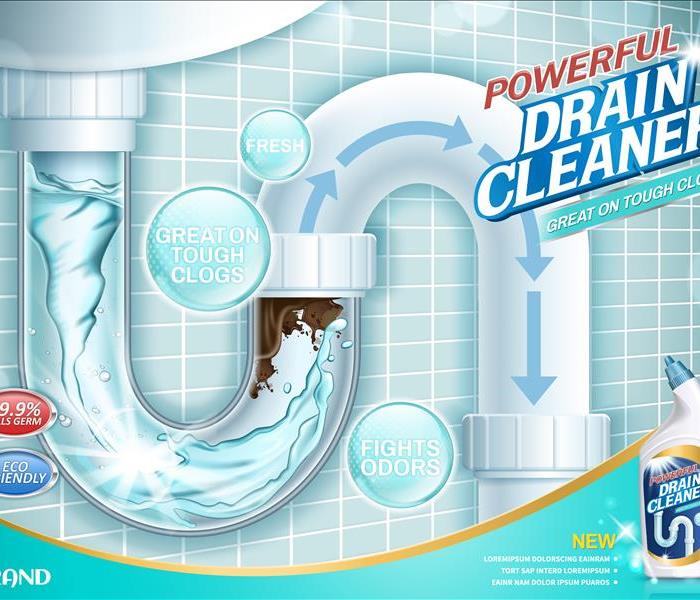 Drain cleaners may degrade plumbing in a residence in Humble, TX
Drain cleaners may degrade plumbing in a residence in Humble, TX
Most chemicals intended for clearing a clogged drain are corrosive and toxic. Depending on pipe materials, drain cleaners may degrade plumbing in a residence in Humble, TX. Enzymatic drain treatments are less damaging, but also work more slowly. Learn more about how acidic, caustic, and oxidizing cleaners work to determine the most effective sewage cleaning method.
How Do Cleaners Work?
Cleaning products are most effective on slow or partially clogged drains. There are three types of drain cleaner chemicals:
- Acidic, such as hydrochloric or sulfuric acid
- Caustic, such as sodium hydroxide
- Oxidizing, such as sodium hypochlorite
Acidic solutions attract electrons, while caustic solutions give electrons to the clog. Both of these types of cleaners release heat. Sodium hypochlorite oxidizes the clog and releases electrons, heat, and gas. A fully clogged drain should be cleared mechanically.
What Are Enzymatic Treatments?
Enzymes restore the bacterial balance of a drain line, which can prevent clogs. These treatments should be used before a drain slows or clogs. Flush mainline enzymes down a toilet twice a month to start and then once every three months. Clear sink or shower drains by pouring enzymes down the drain once a week for a month and then once a month.
Which Treatments Are the Most Effective?
Chemical drain cleaning solutions work quickly to speed up a slow drain or clear a partial blockage, but these products may also damage pipes. These substances are also highly toxic to humans, domestic animals, and the environment. When used as directed, enzymatic treatments are safer and can keep clogs from forming.
In the case of a completely clogged drain, it is better to call a plumber than use treatments that may fail to break up a blockage or sit in pipes and cause damage. If a clog results in a backup and sewer damage, contact a sewage cleaning company in Humble, TX.
3 Ways To Minimize Damage From a Basement Flood
5/27/2022 (Permalink)
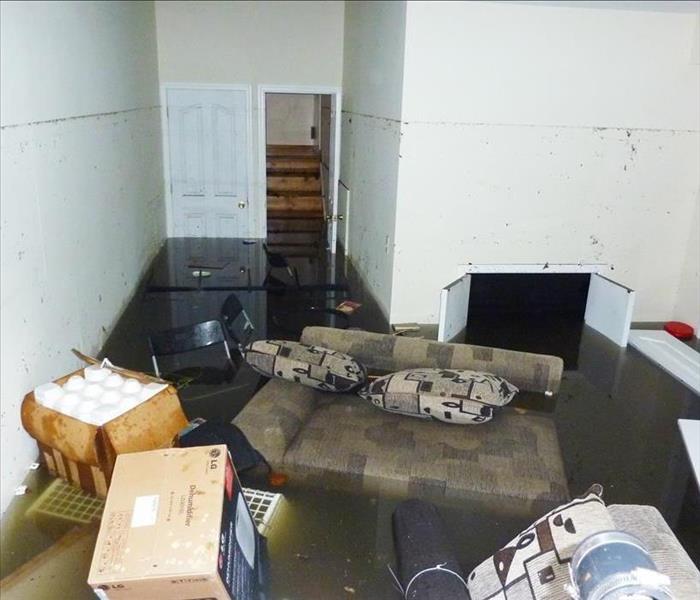 Recovering from a basement flood can be a big undertaking.
Recovering from a basement flood can be a big undertaking.
3 Ways to Minimize Basement Flood Damage
When you have a basement flood in Pittsville, TX, it is important to begin the cleanup process as quickly as possible. The longer the water sits, the more damage is likely to occur. You can help to minimize the damage to your home if you know some reasonable steps to take.
1. Do Not Enter the Flooded Area Unprotected
Submerged basements can pose many hazards. If you must enter, do so with extreme caution. If the water is only an inch or so deep, you can wear rubber boots and walk on plywood to shut off the circuit breaker or stop the source of the water leak. If the water is above the electrical outlets, do not enter. Instead, call the fire department or other emergency personnel and wait for them to arrive.
2. Remove and Replace Damaged Equipment
According to the National Electrical Manufacturers Association (NEMA) and the Gas Appliance Manufacturers Association (GAMA), mechanical and electrical equipment that has been damaged in a basement flood should be replaced. Do not reuse electrical outlets, wires, or appliances after a flood. Doing so could cause a hazard later. When a professional restoration company arrives on-site, they will help determine what is salvageable and what must be discarded or replaced. Fortunately, flood insurance coverage usually includes the cost to replace damaged building materials such as sockets, drywall, and wires.
3. Create Safeguards for Future Protection
There are some steps you can take to prevent your basement from flooding again in the future. First, make sure all stormwater is routed away from your home's foundation. Proper preparation includes maintaining the ground slope and diverting rain spouts. Install drains or multiple sump pumps inside your basement to quickly get rid of any water. You can install a generator as a backup to keep the sump pumps running even after the power goes out.
Recovering from a basement flood can be a big undertaking. Luckily, there are things you can do to minimize damage to your home and avoid future problems.
The 3 Types of Water Damage
3/8/2022 (Permalink)
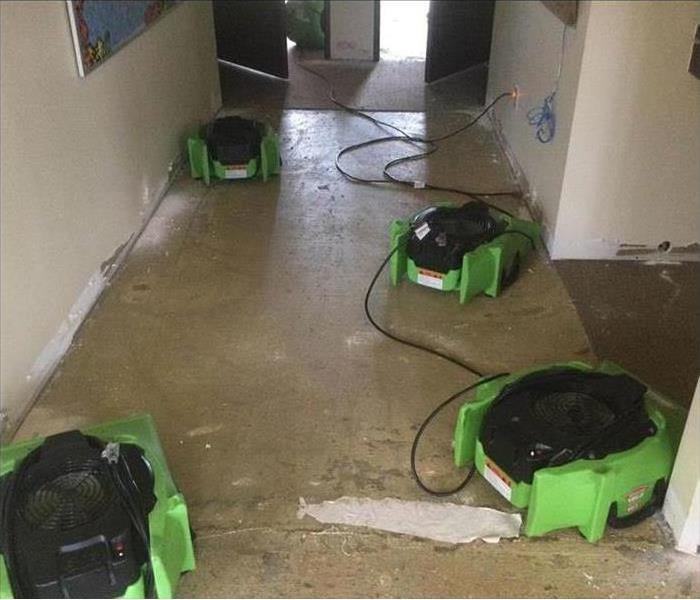 Water damage event after a pipe break in Kingwood, TX.
Water damage event after a pipe break in Kingwood, TX.
Water Categories
Whether you experience a water pipe repair job gone wrong or a sewage backup, you must immediately remedy the water damage. The first step to fixing your Kingwood, TX, business's damage is to hire a water cleanup company. They will categorize the water, so the proper remediation steps are taken.
1. Category 1 or Clean Water
Category 1 water damage is the least worrisome and is often caused by a broken pipe, overflowing sink, or appliance malfunction. This is considered clean water because it is free of toxins and sewage. Typically, the restoration following the water pipe repair will be quick, and there will be few side effects for the building. However, have remediation performed as soon as possible to prevent further damage and mold growth.
2. Category 2 or Greywater
Category 2 damage is caused by greywater. This includes water from a toilet, washing machine, or sump pump backup. While the water may not necessarily be harmful, it is important to have a water pipe repair performed and follow it up with prompt restoration and sanitation to avoid potential health concerns and further damage. This type of remediation will involve water cleanup and sanitation.
3. Category 3 or Black Water
Category 3 damage must be remedied immediately and is the most dangerous of the water categories. This includes water from sewage, storm surges, seas, rivers, and other bodies of water. When this occurs, most of your items will need to be removed for cleaning, and it will take extensive disinfecting to make your business safe again. It is also probable that you will not salvage some of your items and building materials.
If you have recently experienced a flooded business, you should take action quickly. No matter what category the water is, you should promptly hire a remediation team to perform the cleanup. Otherwise, you could endanger yourself and have further damage to your building.
Bursting Pipes Got You Down?
2/7/2022 (Permalink)
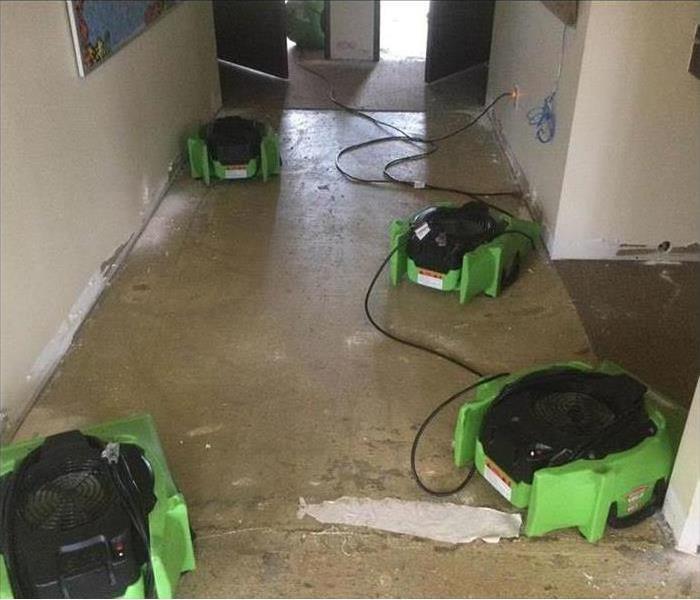 Water damage in Magnolia Gardens, TX.
Water damage in Magnolia Gardens, TX.
Do You Have a Problem With Burst Pipes?
Bursting pipes leave a big mess. You can call a professional in Magnolia Gardens, TX, to fix a broken pipe, but what do you do about the water damage? Plumbers will perform the necessary repairs to fix your burst or leaking pipe, but it will be up to you to deal with the cleanup.
Water Damage
Water can cause serious damage, especially if it is left standing for a prolonged period of time. You should start the cleanup efforts as soon as possible. If the damage is limited to a small space, you might be able to handle things on your own. A water mitigation professional in Magnolia Gardens, TX, may need to be called in if the bursting pipes affected multiple rooms, traveled between floors of your home or went unnoticed for over eight hours.
Cleanup
If you are dealing with standing water or the leak happened near electrical appliances, turn off the power before you enter. You will need to have any carpet removed. Depending on the damage, it may be salvageable. Clear the room of all furniture and other removable items.
If you are dealing with standing water, it needs to be removed. You can hire a professional or use a shop vac, depending on how much water you are dealing with. It is important to thoroughly dry the area. Warm, dry weather might allow you to open doors and windows. Bring in big fans.
You may even need to remove sections of your wall to ensure the space behind is completely dry. Drywall and insulation can wick water. If the insulation isn’t dried properly mold can grow. Water mitigation specialists can come in and determine the full extent of the damage caused by the bursting pipes.
Dealing with water damage can be a frustrating and overwhelming task. It is vital that you remove all water-soaked materials and dry the space out completely. The faster you can accomplish this, the less likely you will have to deal with mold in the future.





 24/7 Emergency Service
24/7 Emergency Service







